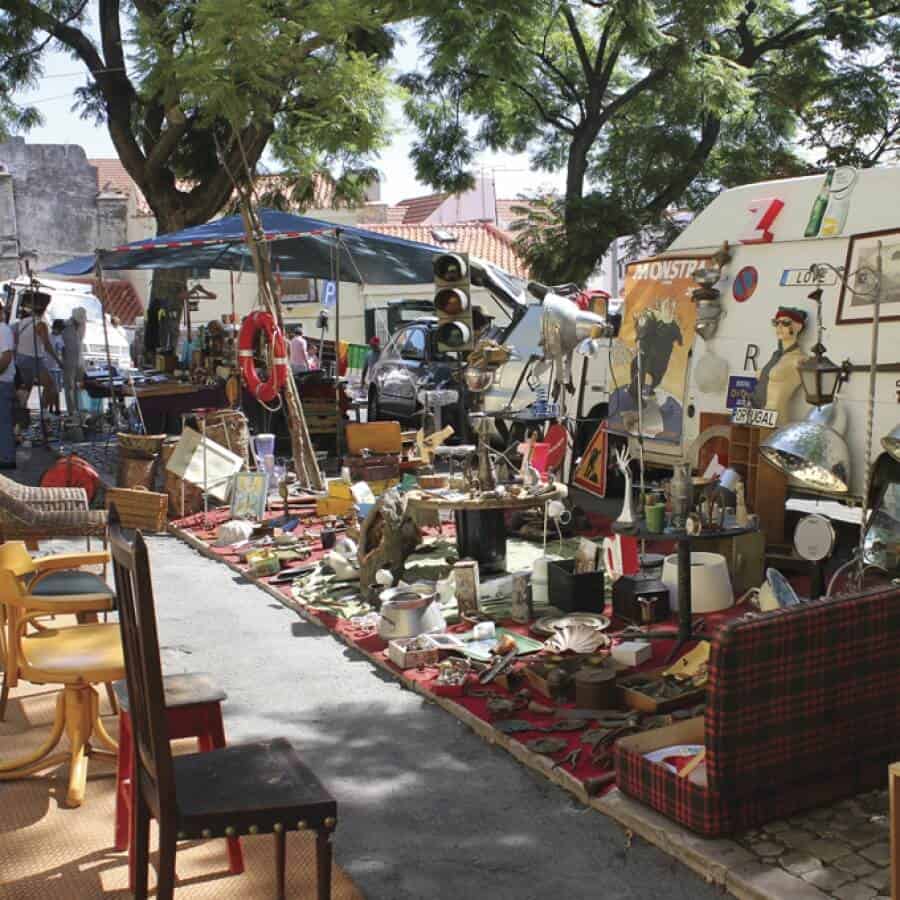Some people associate this concept with useless household rubbish, others – with the latest fashion trends and a concentration of countless treasures on a small patch of land. So, what are flea markets, and why has visiting them become so trendy?
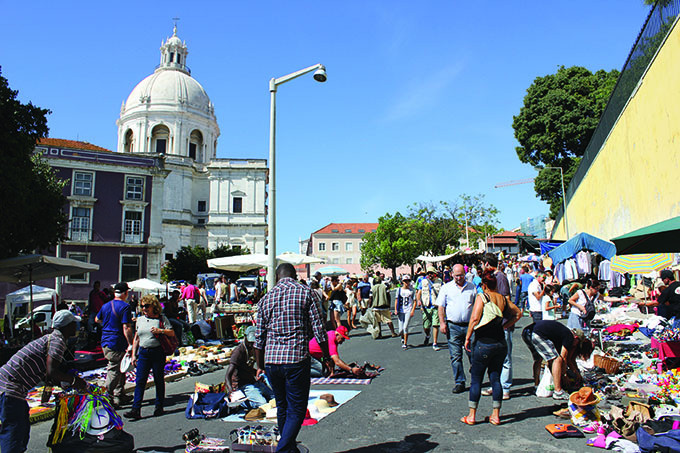
When I was a little girl, I felt really awe-struck when my mother, being in a particularly good mood, took out a wooden box that was decorated with an unsophisticated interwoven ornament made of brass, and not only allowed me to touch it but also to try on some pieces of fashion jewelry. I must say that the contents of this box weren’t part of her everyday wardrobe but were rather a storehouse of memories. The three-strand necklace made of small blue, green and orange beads was, as it turned out, a present from a friend on a business trip. Red clip-on earrings with awfully firm clips that caused an unbearable pain to earlobes in just ten minutes were inherited from a cousin. Grandmother left her the miniature watch on a delicate chain with works that had been broken long before. Over the years the treasures got lost and the box vanished. I had long since taken my mind off of it when all of a sudden, three years ago (2012 – editor’s note), my long-nurtured dream came true as I went on a first date with Paris. Like any decent tourist, I had a list of sights that were highly advised by the guidebooks, and the list included, apart from the Eiffel Tower and the Champs Elysees, the biggest flea market in Europe, the forefather of all “fleas”. It is hard to describe the intense and profound feeling that I experienced after I found “mother’s” jewelry box in one of the countless small shops. It was wedged between an old silver candlestick and a pile of shabby, moth-eaten hats!
Needless to say, the jewelry box was bought at once despite its extravagantly high price, which was knocked down after some persistent bargaining. Since that time I’ve fallen head over heels in love with flea markets, thus visiting them is compulsorily included in my every tour program.
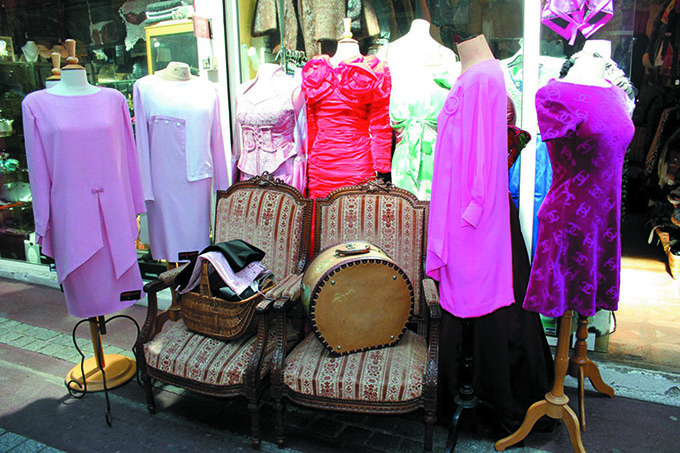
A mirror of life and attitudes towards it
A flea market is a peculiar sociological phenomenon that allows one to immerse oneself instantly in the spirit of a city, to get at least a rough idea about the philosophy of it citizens, and to find a couple of “your own” jewels as a pleasant bonus.
The concept of flea market originated in France: in the late 19th century, Parisians began trading second hand items in the evenings and at night time in the commune of Saint-Ouen. The goods were infested with fleas, and their condition and quality left much to be desired. Nevertheless, the demand was overwhelming, so after a period of time the authorities grew tired of tussling with opportunistic ragmen and officially allotted a trade area to them. That is how the Clignancourt flea market was established, although nowadays there is not a trace left of “illegality” or fleas. The market has lost its spirit of homelessness and now is located under the roof of a market hall. Seven acres of space, two floors with dozens of shops, each of which has its own specialty, such as jewelry, clothing, handbags, shoes, books, paintings, furniture, tableware, home furnishing, and much more. If you haven’t roamed the Clignancourt market, you’ve missed the chance to feel the spirit of Paris.
Being overly subjective when it comes to flea markets, I couldn’t even imagine that this phenomenon could trigger such totally opposite emotions. The first person whose opinion regarding this matter I inquired of, was my friend Nadia from Vienna. Keeping in mind how enthusiastically she had told me about the second-hand leather armchair that became the final element in the interior of her new home, I went to her before all others. Imagine my surprise when she commented almost scornfully about Vienna’s Naschmarkt, “I went there a long time ago, I remember that some rags were being sold there, along with some interior items, all sorts of trinkets and so on. I do not fancy things of this sort”. My second friend, who, like the first one, has undeniably good taste, was slightly less judgmental. “I fancy flea markets because there you can find something really precious but at a reasonable price. Something like antiques. Though I am almost absolutely certain that I’m not going to buy anything, I’m curious to experience the aura, to touch, to feast my eyes. However, these goods contain someone else’s energy. There are people whose hearts are in it, but I’m not a ‘vintage’ person, I don’t find any reflection of myself in these things. I might buy something, and it would just be lying around the house. In that case, why should I buy it in the first place?”
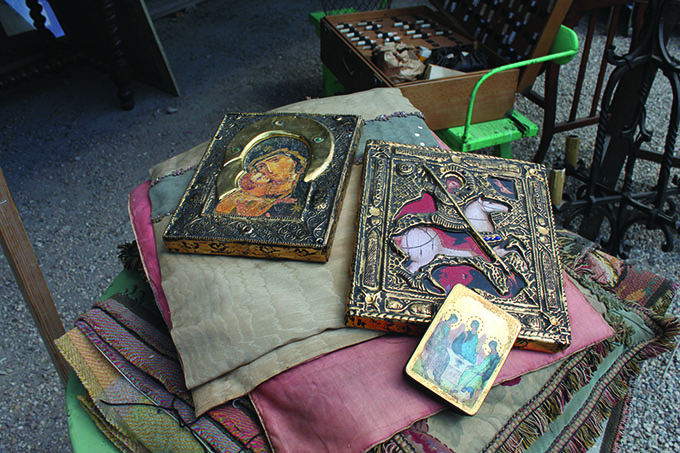
Resurrecting antiques
I visited Kazakhstan for the first time in May, 2015. Regardless of the fact that it happened in the course of a business trip, I had an array of positive experiences. Hospitable partners showed us the city of Almaty in all its glory. The tour included a visit to the city museum, where at that time something like a ‘flea’ exhibition was underway, and all visitors were able to buy not only traditional Kazakh souvenirs but also a variety of antiques. My attention was drawn to a stand with countless earrings, pendants, and utensils. Antique jars, lamps and chalices (isn’t it time to call Alladin?) surrounded by delicate jewelry made an almost magical impression. I clung to a salesman like a beast of prey, asking him about the origin of the treasure. It turned out that some parts of it came from Tatarstan and Persia, some were local, and others had been brought from India and countries “overseas”. For the next thirty minutes Muhmat (that was the salesman’s name) enthusiastically told me about how he and his colleagues visit godforsaken villages, question locals, search for rare jewelry, and buy it sometimes for trifling sums (because the owners are not really aware of some items’ real value), sometimes in poor condition, sometimes one earring instead of two. They occasionally buy a lamp without a shade or a vase without handles. As I listen to his story, having forgotten about my colleagues and the time, Muhmat takes out a thick tome from under the counter and frantically searches in it for a photo of one of the earrings that lies on the stand. At the same time he provides a brief review of the main features of Persian culture and its traditions, interrupting himself and enriching his narrative with technical details: how to groom antique metal, gemstones and so on. Anyway, they found only one earring, not a big deal! Muhmat said that there was an instance in his practice when such a loner had to wait for its pair for five years, and yet they eventually found it somewhere.
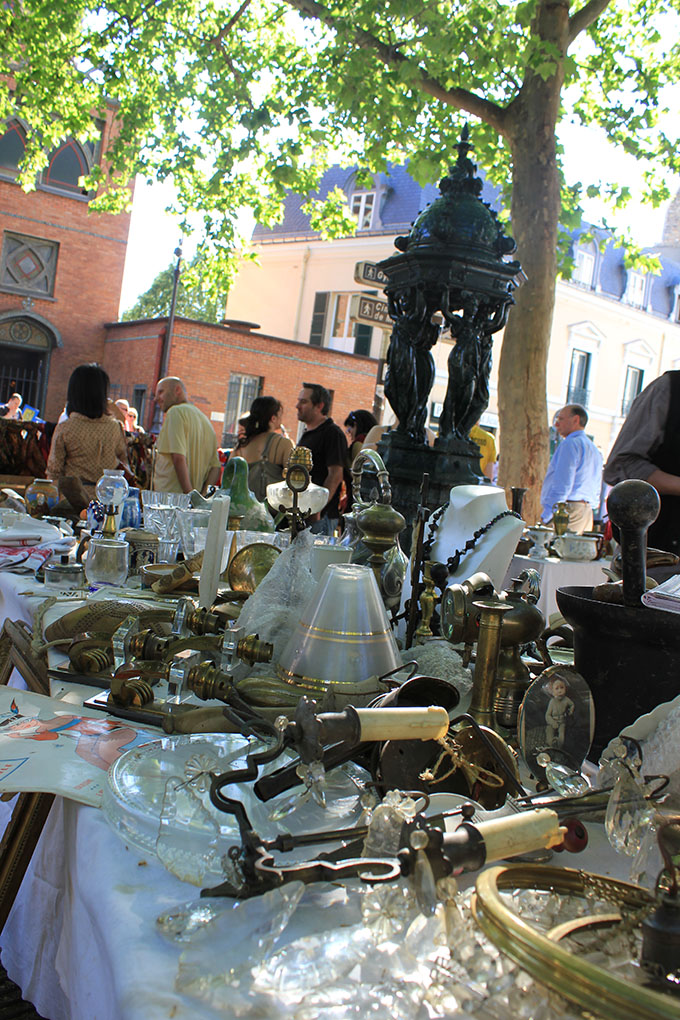
Treasure hunters
Experts as well as amateurs come to flea markets for their own purposes. “I don’t visit flea markets just out of curiosity; I’m looking for particular items there. I’m interested in vintage printed products above all things, such as postcards, envelopes, invitations, and labels of leading brands”, says Alesya Karmalinskaya, a professional in the field of printing arts. “For instance, I have a label from children’s soap by the Chloe fashion house that dates way back to the early 20th century. It is not just a piece of paper with a description of the soap’s ingredients; it is a small brochure inside of which is the Tale of Little Red Riding Hood written in the French language, accompanied by vintage color illustrations. It is a great example of work by marketing specialists that is still relevant, and therefore it is possible to learn from it.”
However, along with the issue of particularity of search arises the question of how to distinguish an original item from a fake one. Just like most markets, the goods that are sold at flea markets are by no means always of high quality. Sellers of Chinese goods are an integral part of modern “fleas”, and the things they offer have nothing in common with vintage items or antiques, although sometimes they look virtually indistinguishable.
“Considering that the items that interest me are very specific, I can definitely tell whether it is an original product in front of me or not. Vintage technology, quality of paper, such small details as, for example, writing fonts or the style of graphic design and page layout which was popular at that time would totally give itself away, because it is almost impossible to forge those things”, Alesya explains.
This also holds true for the clothes: being an avid fan of purses and accessories, the author of this article learned quickly how to distinguish a worn copy from an original: lining, zipper, embroidery or, conversely, its absence, price, material . . . It is also rather important to have some knowledge of fashion history: who was the designer and how he worked, what was his style and area of focus. If you are “competent” in those subjects, no charlatan will be able to push a cheap copy as “that very” Chanel.
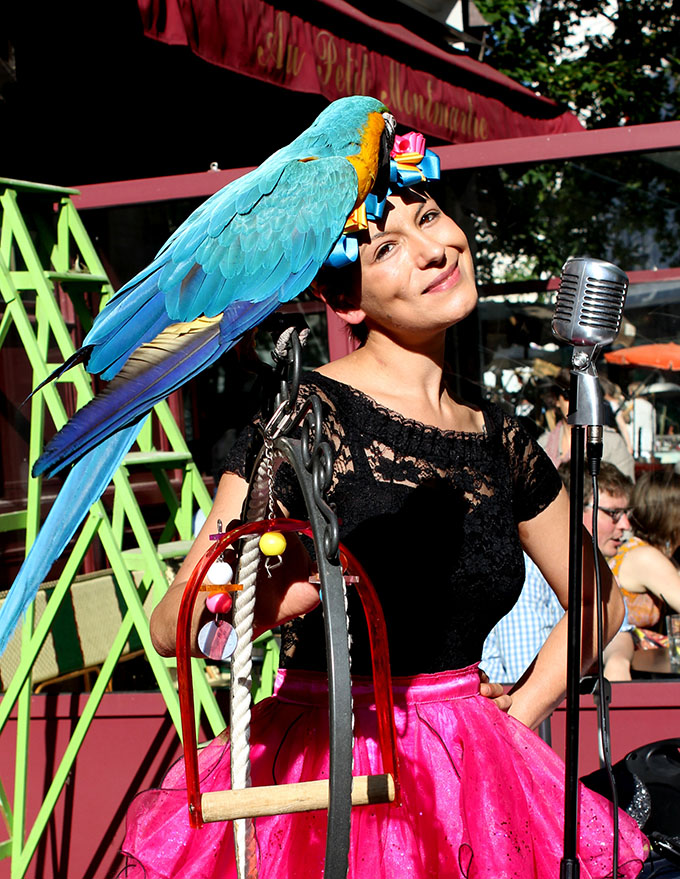
Ragman’s Europe
“In 2013 we accidentally visited a French flea market in the city of Bordeaux. I must admit that I’d never been to this kind of market before, although I gladly visit them in various European countries and I’m able to make a comparison”, Alesya tells me. “Every seller had a distinctly allocated territory under an awning that created the feeling of a snug shop and allowed sellers not only to lay out the merchandise at random on the ground, but to create a personal design within a small space and neatly define the place for every item that had been put up for sale. All goods were in perfect condition.”
Since the market opened in the early morning, by 11 a.m. all sellers had already begun setting the table. Really, they laid out the cloth and put out wine glasses and porcelain tableware. It is not just amazing; it creates the feeling of some theatrical play you would definitely want to watch.
There are few known flea markets in Bordeaux, the most popular of which is the one located opposite the Basilique Saint-Michel. But during our visit we went to a rather different one, no less amusing though, which is situated on the Quincones Square. The market is usually open on weekends and during holidays from 7 a.m. until about 2 p.m. Don’t be so sure that one or two hours of treasure studying will be sufficient, give it more time. It’s definitely possible to find a masterpiece at a flea market and easily settle on a reasonable price. In my opinion, you shouldn’t spend a lot of money at the market because in that case the whole charm of the process just vanishes. Bargaining is a game that has a crucial role.”
The Feira da Larda (Thieves’ Market) in Lisbon made the last lively impression on the author of this article. Trading starts in the early morning at the foot of the church at Santa Clara Square, and towards noon it invades all the neighboring streets. For locals it is not only an opportunity to get rid of junk (one can even find empty shampoo bottles or other useless stuff at this market) but also to chat with friends whom they haven’t seen in a long time. You can find everything at this place: from an oak chest that is impossible to lift to crystal glassware and ancient paintings. Sounds of Fado, Portuguese melancholic and teary tunes, are vibrating, the intoxicating aroma of strong coffee and pastry, which locals are drinking and eating with relish in every spare moment, is floating in the air, sellers and buyers are chatting here and there in different languages. Just like anywhere else, it is necessary to bargain here: if you don’t get your bearings, someone will sell you an unsophisticated bracelet made by a contemporary craftsman for 20 Euro. However, if you maintain a firm grip a time-stained silver coffee spoon can be yours for just 1 Euro. It is advisable to learn some Portuguese phrases beforehand in order to discourage a seller from “driving up” the price.
When it comes to market atmosphere, Prague certainly lags behind other European cities, but, as expected, it has its own treasures. The market near the Kolbenova metro station is the biggest and the most famous of all, and it is open on weekends from 9 a.m. until 13:30 p.m. Its popular name is Kolbenka, and this market even has its own website where you can find answers to frequently asked questions, a list of regular sellers, photos, and up-to-date information. The market has been functioning since 2004; its predecessor was an open-air trading space in Smichov. Roman Cilecek, the founder of Kolbenka, had been trading in Smichov for a long time. He says that the thought that, after all, Prague needed its own flea market led him to open his own version of the concept. Its first location was one of the squares in the Prague 4 district, and then the market strongly took root near the Kolbenova metro station and hence got its name. The number of sellers depends on the weather conditions: on a pleasant day the number of trading spots may reach up to six hundred.
You can only dream about the gimmickries of sellers at the Bordeaux market – a place where the goods are sold directly from car boots under unpretentious awnings and in homemade stalls. According to this author’s observations, one should consider visiting this place only if there is a need for some low-priced ordinary goods rather than true vintage stuff. However, Cilecek reckons that Kolbenka is in fact on a par with other European markets. All obstacles to the market’s development are of a bureaucratic character. “Perhaps the only significant difference is that we conduct our trade in a rented area. Therefore, we can’t offer our sellers the same comfortable facilities that are taken for granted in similar places in Europe. Yet another discrepancy is that everywhere else in Europe this kind of activity is encouraged, while our regional authorities are shying away from the opportunity to organize a flea market in every part of the city. According to the mayors to whom we’ve appealed, the authorities are not tempted by the idea of going through extra trouble concerning large gatherings of people and vehicles on the streets. As for sophisticated structures like pavilions and so on, we don’t have permission to erect them, therefore our sellers are making do with what they have.”
The terms of buying and selling at Kolbenka are the same as anywhere else. “Every buyer has an opportunity to bargain”, Mr. Cilecek says, “At one spot we are selling goods in search of which you would have to visit a number of shops: from paintings and furniture, to cars and various spare parts. You can meet all kinds of people in the crowd of buyers: an ordinary factory worker, as well as a lawyer or a judge. Local celebrities may also occasionally visit this place.” According to the owner of the market, who likes to stroll around the rows at dear Kolbenka, every item will find its buyer: a watch without hands or a broken radio set may seem to be useless junk to someone, while for someone else it may be the purchase of a lifetime. Who knows, maybe it will alter his life for the better.
This article was originally published in Youth Time print edition, 32nd issue. Click here to check the content of the issue, subscribe here, purchase one issue here.
Photos: Alexandra Baranova
Support us!
All your donations will be used to pay the magazine’s journalists and to support the ongoing costs of maintaining the site.
Share this post
Interested in co-operating with us?
We are open to co-operation from writers and businesses alike. You can reach us on our email at [email protected]/[email protected] and we will get back to you as quick as we can.
